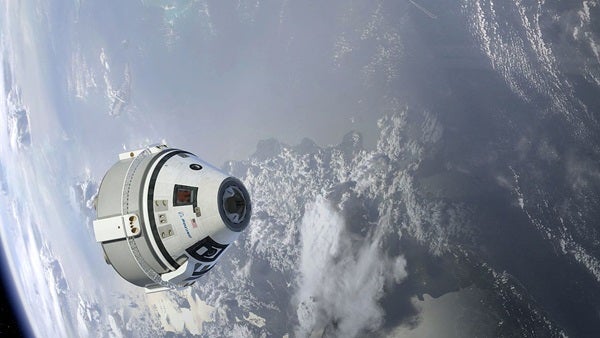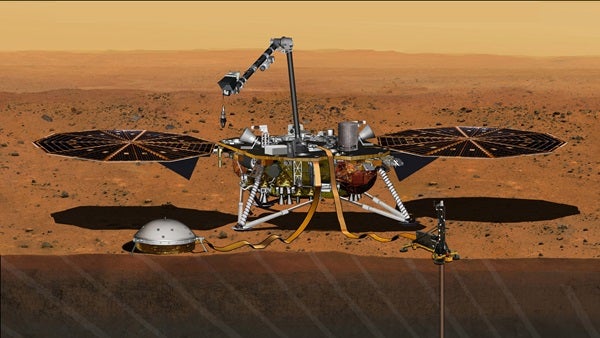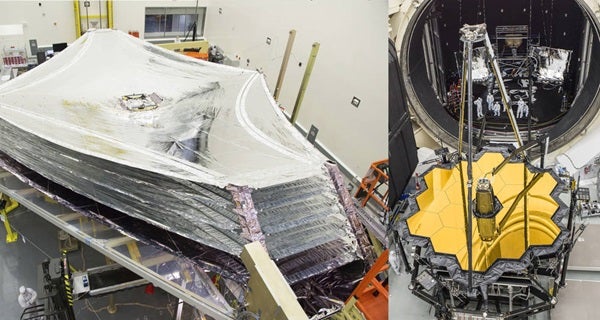BepiColombo
The European Space Agency, working with the Japan Aerospace Exploration Agency, is looking forward to starting their first-ever trip to Mercury next year. This is one of the least explored planets in the solar system, and the environment there is intense, to put it mildly. The spacecraft will endure massive temperature variations, with highs of 800 degrees Fahrenheit (427 degrees Celsius) and lows around -280 degrees Fahrenheit (-173 degrees Celsius). The craft’s mission, when it reaches Mercury in 2025, will last about a year, and if they get lucky, maybe two.
Chang’e 4
As China’s second lander mission to the Moon, Chang’e 4 is a followup to previous versions, namely Chang’es 1,2, and 3. In the time since those missions’ development, the China National Space Administration has dramatically improved its technology and predictions. They intend to explore parts of the Moon starting with a relay orbiter and are following it up with a lander and a rover. Mission scientists are currently looking at landing on the far side of the Moon, the side we never get to see. However, those plans may be disrupted if they discover another area that looks more promising.
Boeing has been hired by NASA as part of its ongoing program to find a better way to get people into space. They, along with other companies like SpaceX, have been working toward a manned launch and in 2018, Boeing is expected to try it. The Starliner is a whole new design: a weldless structure that can transport up to seven crewmembers or a mix of crew and materials. For its first manned flight, Boeing will be doing the mixed bag. They’ll be sending four NASA astronauts in addition to materials and data to the International Space Station. If all goes well, they will be the front-runners for NASA’s Commercial Crew Program.
Solar Orbiter
Another brainchild the ESA, the Solar Orbiter (SolO) is set to launch and start studying the Sun, which you might’ve been able to guess from its name. It will investigate heliocentric and solar physics. As a part of the larger Cosmic Vision Program, the SolO is only a small component of a much larger, ten-year program. The SolO was initially set to launch in 2017, but was delayed to ensure that the program could complete all of its goals with minimal issues. As the first medium program of Cosmic Vision, the pressure is as high as the goals.
Insight, which stands for Interior Exploration using Seismic Investigations, Geodesy and Heat Transport, is a NASA probe that will launch next year and head for Mars. Its goal is different than the previous rovers that have covered Mars’ surface — it will instead seek to find out about how the planet was formed. The lander, which is planned to launch in May of next year, will examine the deepest layers of the planet, tracking its temperature differences and tectonic plate movements, among others. Scientists hope that the information we get will help us to learn how other planets are formed, both within our solar system and without.
Chandrayaan-2
The Indian Space Research Organization (ISRO) is also planning a launch for 2018. They will be sending Chandrayaan-2, a followup to Chandrayaan-1, to the Moon. Similar to Chang’e 4, but with an original plan, their mission is to use an orbiter, lander, and rover to explore more of the Moon’s surface. Unlike other countries’ missions to the Moon, the orbiter will create a 3-D map of the Moon’s surface. While we do have other maps of the Moon, this is the first time India has crafted their own using an original plan without foreign aid. The lander will take a look at the Moon’s crust and mantle. Some of the mission’s technology is from Roscosmos, the Russian space agency.
Running late
While all of these programs from around the world are planned for 2018, there’s a good chance that some of them will be delayed. That makes sense — after all, we won’t all lose weight and quit smoking this year either! In fact, one of the original projects on this list is already running late, but that’s okay — these scientists are preparing for their 2019 resolutions already:
The Hubble gave us incredible images of deep space that significantly expanded our understanding of the universe. Its successor is the James Webb Space Telescope, which was originally set to launch in October 2018 and will now launch between March and June 2019. This telescope will be even bigger than the Hubble, and therefore able to capture images of deeper space than Hubble could. It will also be able to provide more detail than its predecessor, but because it needs to use rocket fuel constantly, is unlikely to last as long.
The JWST not being able to launch on time is an important reminder for New Year’s resolutions. We may not always reach our goals, but that doesn’t mean we should give up. Just like the telescope, you can always head for a better and more complete launch next year. In the meantime, don’t be too hard on yourself. Set your goals for the Moon. If you miss, you’ll land among the stars.













